Sliding Outside Doors: Complete Buyer’s Guide
Table of Contents
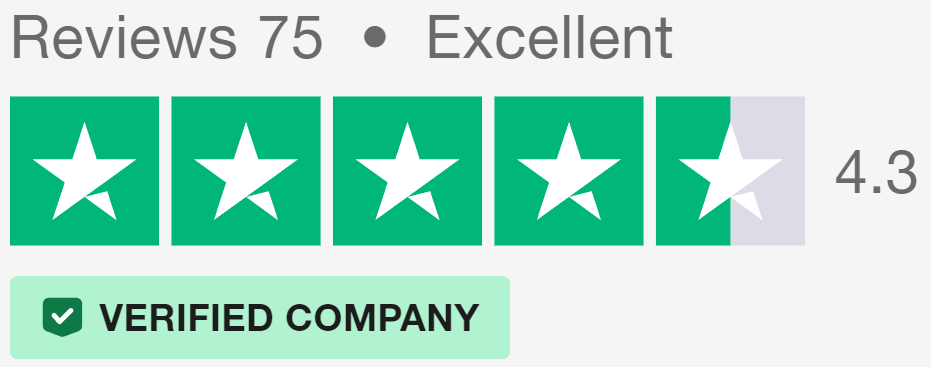
What Are Sliding Outside Doors?
Sliding outside doors form a striking feature in many British homes, offering a smooth way to connect living areas with gardens or patios. These large glass panels glide along tracks, creating wide openings without the swing space required by traditional hinged doors.
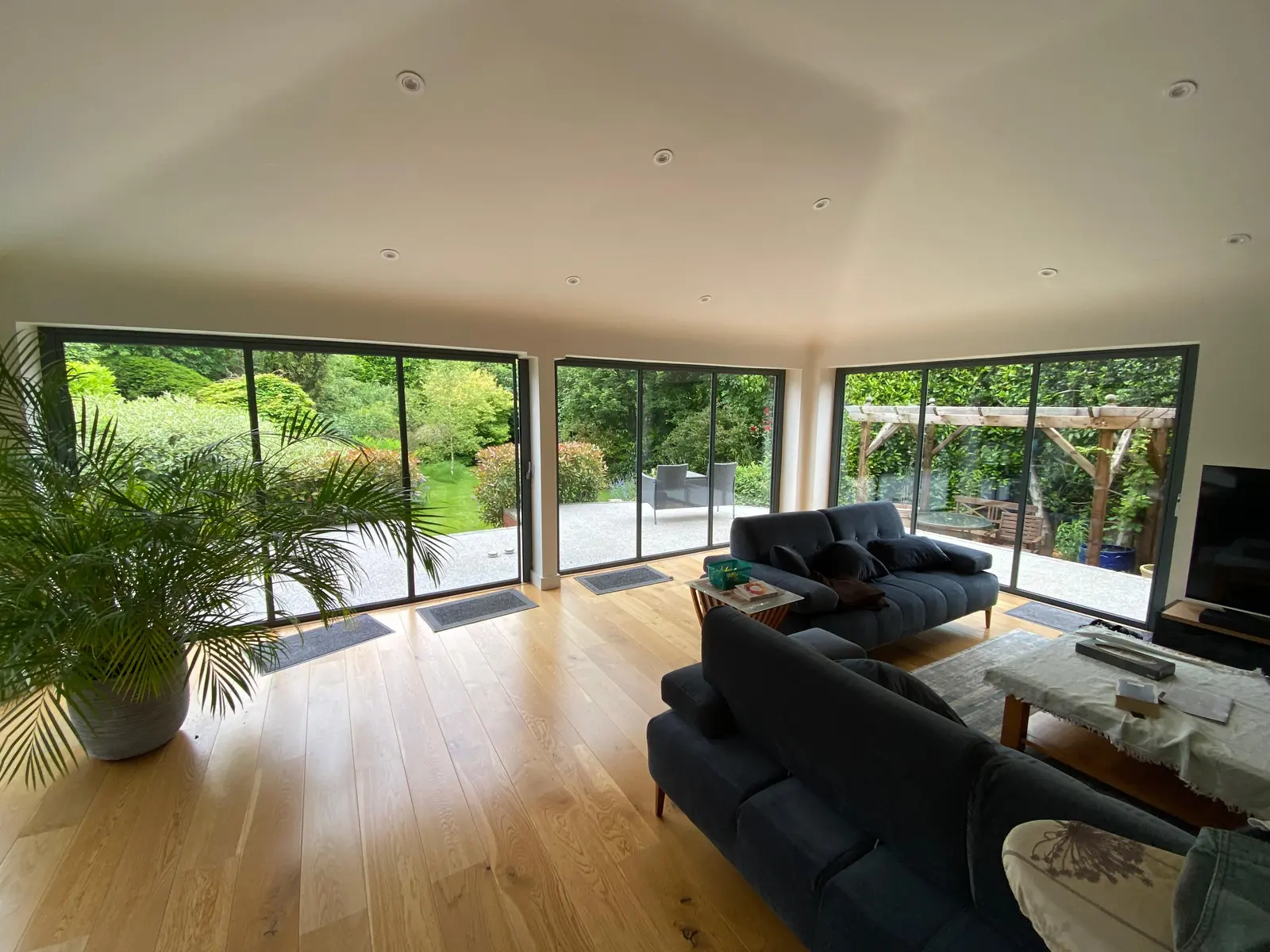
How Sliding Doors Work
Two or more panels of glass sit within a frame, usually made of uPVC or aluminium. One panel remains fixed while the other moves along a track using rollers or wheels. This simple design allows for easy operation, even with large glass panes.
Modern slide door systems often incorporate advanced features for improved performance; multi-point locking systems for added security are very common, and some have soft-close mechanisms to prevent slamming. The tracks may be recessed into the floor, creating a flush threshold for easier access.
Key Benefits
Outside sliding doors allow ample natural light to flood interior spaces, brightening rooms and potentially reducing energy costs. During warmer months, these doors can be fully opened to create a wide passageway, ideal for entertaining or simply enjoying the outdoors.
Space-saving is another big benefit of sliding outside doors, since, unlike swing doors, they don’t require clearance to open, making them perfect for smaller rooms or areas where furniture placement is limited.
Energy Efficiency
Double outside doors with glass panels can contribute to a home’s energy efficiency, with double or triple glazing helping to insulate against heat loss in winter and keeping interiors cool during summer, and some designs incorporating low-emissivity (low-E) glass coatings, further improving thermal performance.
By partially opening a sliding door, homeowners can control airflow, helping to maintain a comfortable indoor temperature without relying heavily on heating or cooling systems, leading to improved air quality and reduced energy bills.
Sliding Outside Doors: Types and Configurations
Double Sliding Doors
The most common type of sliding outside doors is the double-panel configuration. This design features two large glass panels, with one fixed and the other mobile. Double sliding doors are popular for their simplicity and effectiveness in creating a clear view of the outdoors.
These doors work well in spaces where a wide opening is desired but wall space is limited. They’re often installed as replacements for French doors or bifold doors or as new exterior doors in renovations. Double sliding doors can typically span openings from 1.8 to 3 metres wide, making them suitable for most standard patio or balcony entrances.
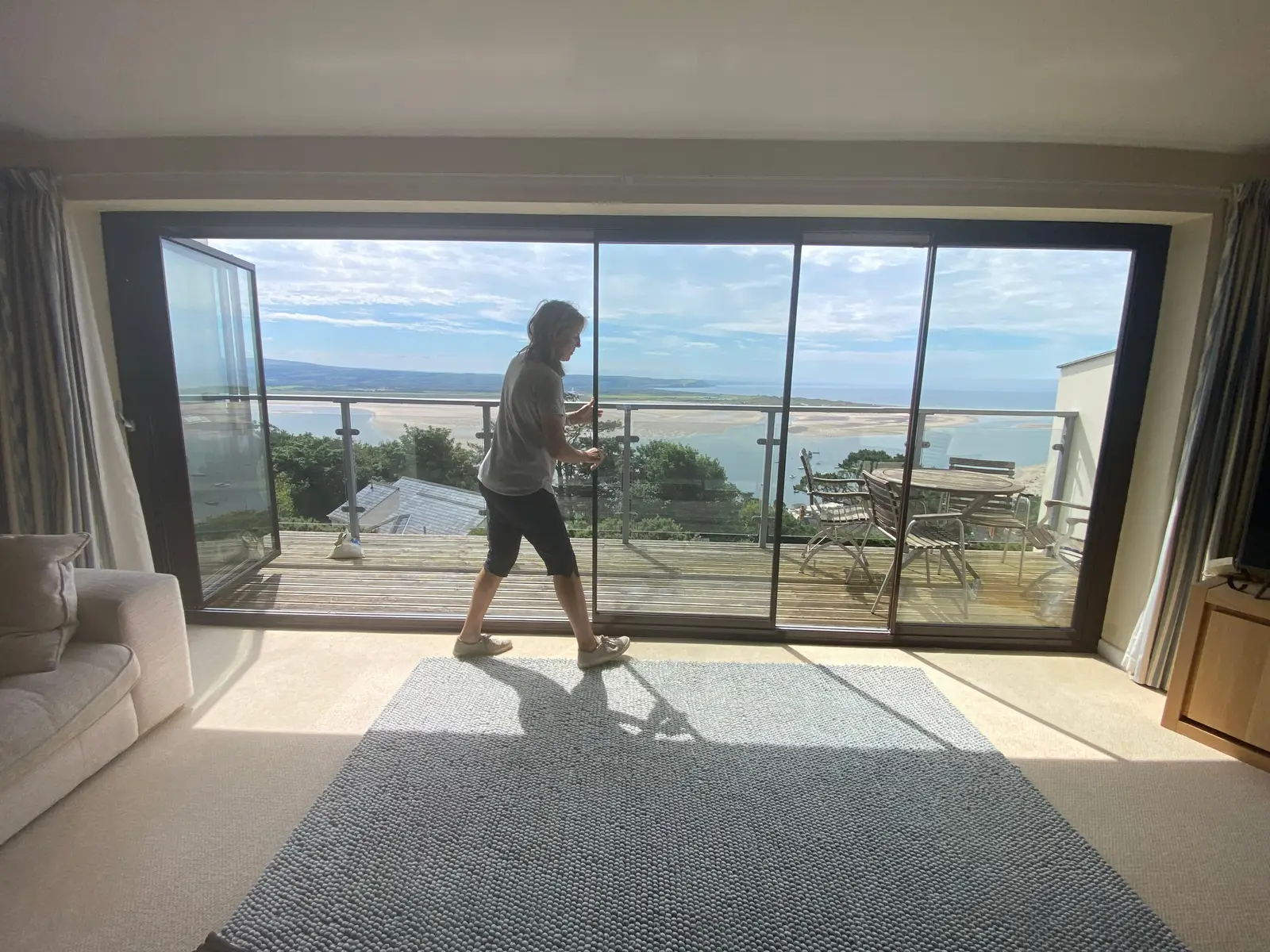
Slide and Turn Systems
Slide and turn systems (also known as slide and stack doors) are one of the most popular and versatile sliding door alternatives that we often recommend for those seeking more flexibility. These doors allow multiple panels to slide along a track and then pivot to stack neatly against a wall or each other. Slide and turn doors are available in a wide range of sizes, and can often span entire walls, making them particularly useful for large spaces like open-plan living areas or conservatories.
Pocket Doors
Pocket sliding doors are a clever option for those who want to completely hide the door when it’s open. Outside glass pocket doors slide into a cavity within the wall, disappearing from view. While less common as exterior doors due to the need for a suitable wall cavity, they can be an excellent choice in the right setting.
Pocket doors are ideal for areas where space is at a premium. They offer a clean, minimalist look when open and don’t intrude on either indoor or outdoor space.
Corner Sliding Doors
For homes with panoramic views or unique architectural features, corner sliding doors provide an striking option. These L-shaped systems allow two sets of sliding external glass doors to meet at a corner without a fixed post, opening up two sides of a room simultaneously.
Corner sliding doors work particularly well in modern, open-plan homes or properties with scenic surroundings.
Materials and Frames for Sliding Outside Doors
uPVC Frames
uPVC sliding glass patio doors have become increasingly popular in British homes due to their affordability and low maintenance. These doors resist weathering, don’t rot or corrode, and rarely need more than a simple wipe-down to keep clean.
uPVC patio doors offer good insulation properties, helping to keep homes warm in winter and cool in summer. They come in a range of colours and finishes, including wood-grain effects for a more traditional look. While not as slim as some alternatives, modern uPVC profiles have become more streamlined, offering better views and increased light transmission.
Aluminium Frames
Aluminium doors are known for their strength and slim profiles, making them a favourite for those seeking a modern, minimalist aesthetic. These metal sliding doors allow for larger glass panels and narrower frames. Outside sliding doors made from aluminium are incredibly durable, resisting corrosion and requiring minimal upkeep.
Their structural integrity allows for taller and wider door configurations, suitable for large openings or floor-to-ceiling installations. Aluminium’s strength also means these doors can support heavier glass units, including triple glazing for improved thermal and acoustic performance.
Modern aluminium patio doors incorporate thermal breaks – strips of less conductive material that separate the inner and outer sections of the frame. This feature improves the thermal efficiency of the doors, addressing the material’s natural tendency to conduct heat.
Timber Frames
While less common for sliding door systems, timber frames offer a classic, warm appearance that appeals to many homeowners. Wood has natural insulating properties and can be painted or stained to match any decor. Outside doors with glass in timber frames often feature in period properties or homes aiming for a more traditional aesthetic.
However, timber requires more maintenance than uPVC or aluminium. Regular treatment is necessary to protect the wood from moisture and prevent warping or rotting. Despite this, many find the natural beauty and tactile quality of wood worth the extra care.
Glass and Glazing Options for Sliding Outside Doors
Double vs Triple Glazing
Double glazing has long been the standard for outside doors with glass, offering a good balance of thermal insulation and cost-effectiveness. This type of glazing consists of two panes of glass with a gap between them, usually filled with air or an inert gas like argon. Double-glazed external doors provide decent insulation against heat loss and noise.
Triple glazing, as the name suggests, adds a third pane of glass. This extra layer further improves thermal performance, making triple-glazed doors more energy efficient. While more expensive upfront, triple glazing can lead to lower heating bills over time. It’s particularly beneficial in colder regions or for north-facing doors that receive less sunlight.
Toughened and Laminated Glass
Safety is a key concern for any glass door, and sliding outside doors are no exception. Toughened safety glass is heat-treated to make it much stronger than regular glass. If broken, it shatters into small, rounded pieces rather than sharp shards, reducing the risk of injury.
Laminated glass offers another layer of safety. It consists of two or more sheets of glass bonded together with a plastic interlayer. If the glass breaks, the interlayer holds the pieces in place, preventing them from falling out of the frame. This makes laminated glass an excellent choice for sliding outside doors in homes with children or in areas prone to strong winds or attempted break-ins.
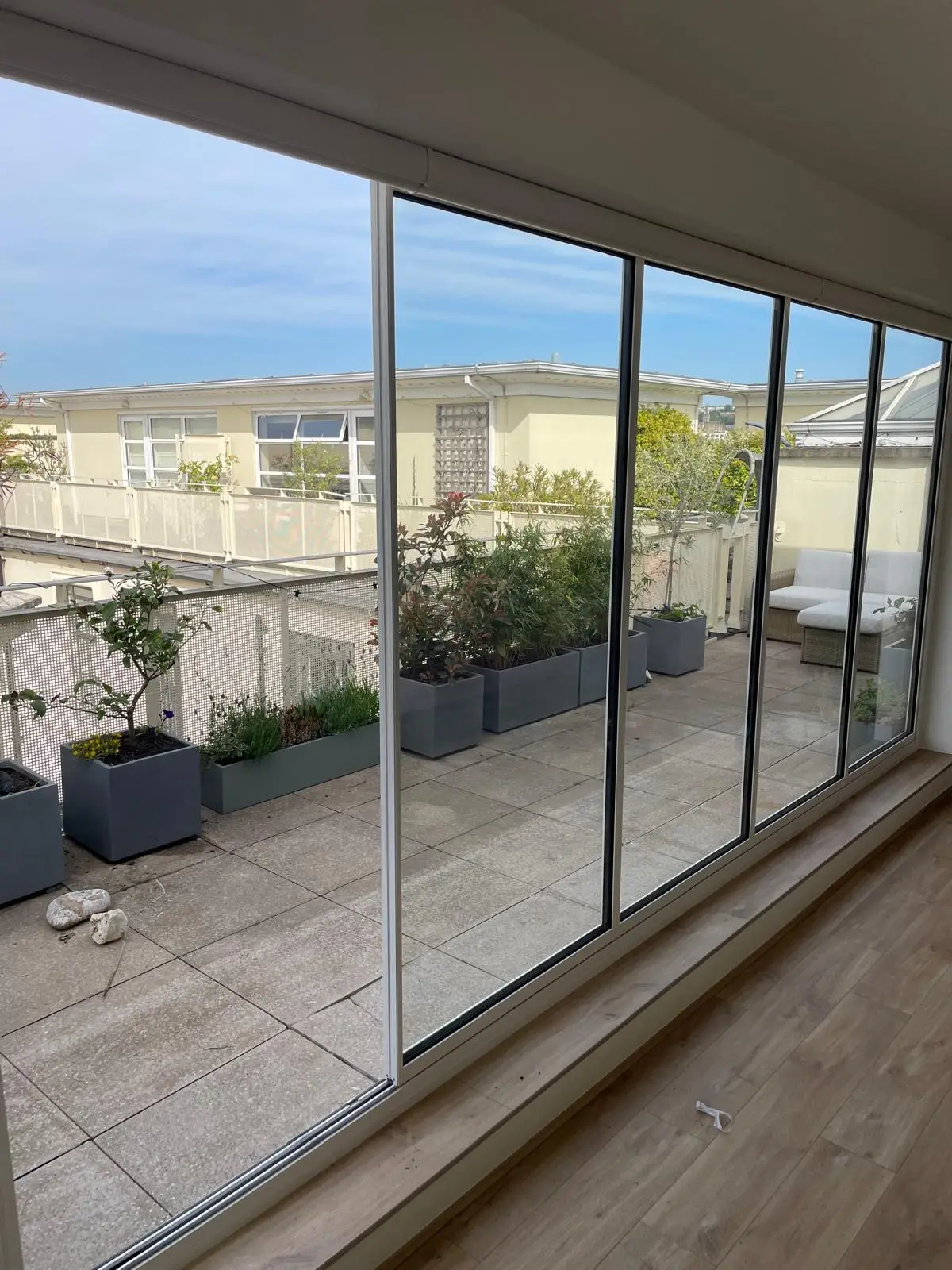
Low-E and Solar Control Glass
Low-emissivity (Low-E) glass is coated with a microscopically thin layer of metal oxide. This coating reflects heat back into the room during winter while allowing sunlight to pass through. In summer, it helps reflect the sun’s heat, keeping interiors cooler. Outside sliding doors fitted with Low-E glass can help reduce energy bills year-round.
Solar control glass goes a step further in managing heat gain from the sun. It’s designed to reflect a larger portion of the sun’s heat while still allowing plenty of natural light through. This type of glass is particularly useful for south or west-facing sliding doors that receive a lot of direct sunlight.
Argon-Filled Units
Many high-performance sliding outside doors use argon gas between the panes instead of air. Argon is denser than air and provides better insulation. It’s colourless and odourless, so it doesn’t affect the appearance of the door. Argon-filled units can improve the energy efficiency of double or triple-glazed doors, helping to keep homes warmer in winter and cooler in summer.
Customisation and Style
Sliding outside doors offer numerous customisation options, allowing homeowners to tailor their doors to match their unique tastes and requirements. From colour choices to additional features, these doors can be adapted to suit various architectural styles and personal preferences.
Colour Options
Gone are the days when outside sliding patio doors were limited to white or natural wood finishes. Today, a wide range of colours is available, with anthracite grey sliding doors becoming increasingly popular for their modern, sophisticated look. This dark, neutral shade complements both contemporary and traditional home designs.
Many manufacturers offer dual colour options for sliding outside doors. This means you can choose different colours for the interior and exterior faces of the door. For example, you might opt for a bold colour on the outside to make a statement, while keeping the inside neutral to match your interior decor.
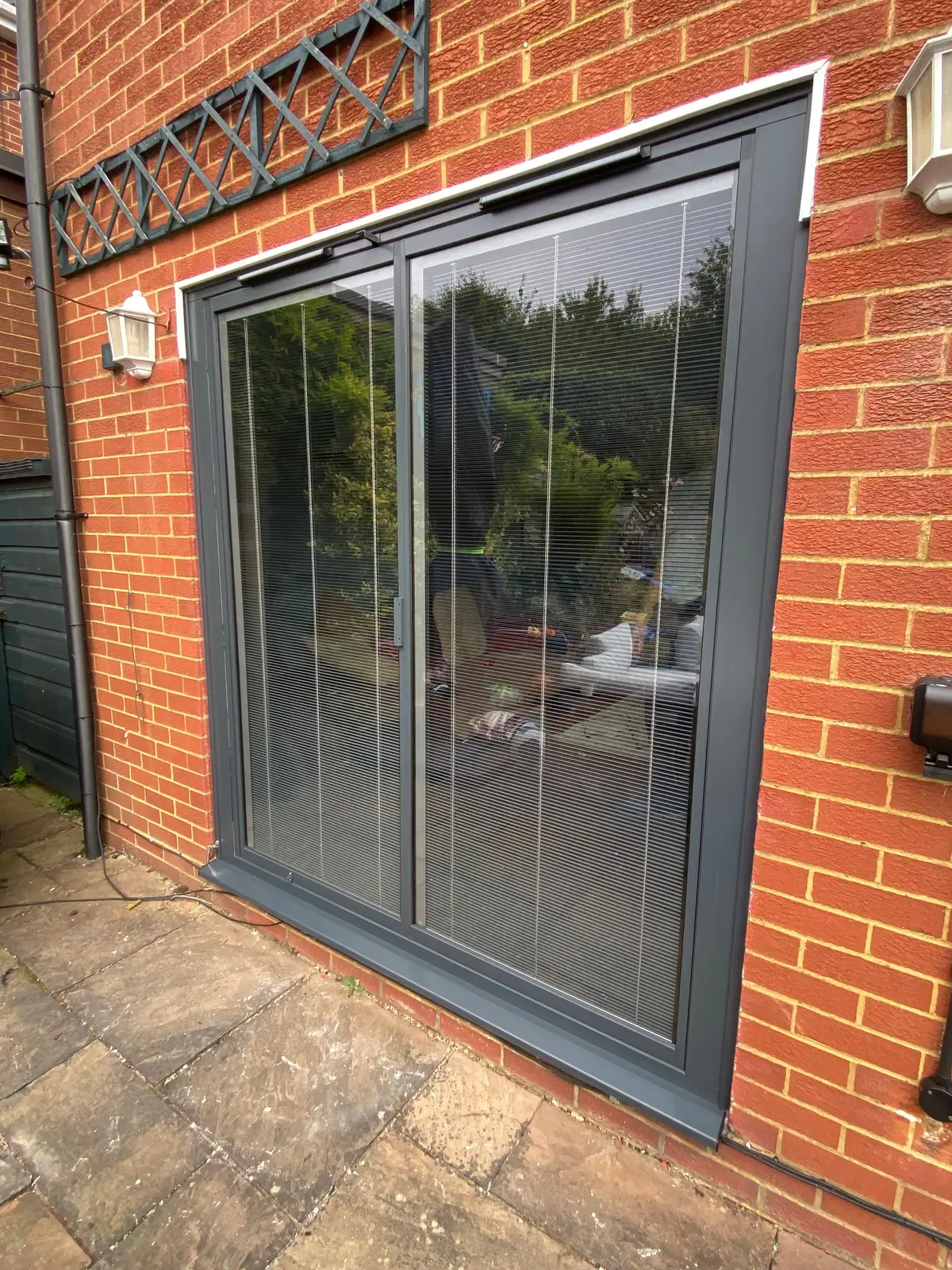
Integral Blinds
Integral blinds are a practical addition to outside doors with glass. These blinds are sealed between the panes of a double or triple-glazed unit, offering privacy and light control without the need for traditional curtains or external blinds. They’re protected from dust and damage, making them a low-maintenance option.
Operated by a magnetic slider or a motorised system, integral blinds can be easily adjusted to control light levels and privacy. They’re particularly useful for sliding outside doors in bedrooms or home offices where light control is important.
Flush Thresholds
Floor to ceiling sliding doors can create a striking visual impact, but the threshold – the bottom part of the door frame can disrupt the view and create a trip hazard. Flush thresholds are a solution to this.
A flush threshold sits level with both the interior and exterior flooring, creating a smooth step between sides. This design not only looks sleek but also improves accessibility, making it easier for wheelchairs or pushchairs to move through the doorway. Outside sliding doors with flush thresholds are ideal for creating a cohesive look between indoor and outdoor living areas.

Crittall Style Doors
For those seeking a distinctive look, sliding crittall doors offer an appealing option. Inspired by the industrial aesthetic of the early 20th century, these doors feature slim metal frames divided into a grid pattern. While traditional windows and doors in this style are made of steel, many modern versions use aluminium to achieve a similar look with improved thermal performance.
Sliding outside doors in the crittall style combine the benefits of large glass panels with the character of multiple smaller panes. This design allows plenty of light to enter while adding visual interest and a touch of industrial chic to both modern and period homes.
Outside Sliding Doors FAQ
Are outside doors with glass safe?
Slide doors often use toughened glass, which is much stronger than standard glass. If broken, it shatters into small, granular pieces rather than sharp shards, reducing the risk of injury. Many manufacturers also offer laminated glass options for added safety and security.
How wide can slide doors be?
Standard widths for outside sliding doors typically range from 1.8 to 4 metres, but sliding doors made to measure can often be made much larger. The maximum width depends on the door system and materials used, with some high-end systems capable of spanning up to 8 metres or more.
What security features should I look for when buying sliding outside doors?
Key security features for sliding outside doors include toughened glass, a multi-point locking mechanism, and compliance with PAS 24 standards. Look for doors with anti-lift devices, high-quality locks, and reinforced frames. Some manufacturers offer additional security options like laminated glass or smart locks for extra peace of mind.
Are outside sliding doors wheelchair accessible?
Many outside sliding doors can be designed for wheelchair accessibility. Look for options with low threshold designs or flush thresholds. Wide openings and easy-to-operate handles or motorised systems can further improve accessibility for wheelchair users.
How do sliding doors compare to French doors in terms of space efficiency?
Outside sliding doors are often considered one of the most popular alternatives to French doors due to their space-saving design. Unlike bi-fold doors or French patio doors that swing open, sliding doors operate parallel to the wall, making them ideal for areas with limited space.
Can sliding outside doors be used in period properties?
Outside sliding doors can be successfully integrated into period properties with careful design planning. Choose styles that complement the existing architecture, such as timber frames or crittall style designs. Many manufacturers offer traditional aesthetic options with modern performance features, allowing homeowners to maintain period charm while enjoying the benefits of contemporary door technology.
What are the best glass options for conservatory sliding doors?
For sliding conservatory doors, think about using solar control glass to manage heat gain and loss. Low-E glass is also beneficial, reflecting heat back into the room during colder months. Outside sliding doors for conservatories often benefit from double or triple glazing with argon gas filling for improved thermal efficiency. Toughened or laminated glass options provide added safety and security.
How do I prevent birds from flying into my glass sliding doors?
To prevent birds from colliding with outside sliding doors, you could try applying UV-reflective decals or patterns to the glass. These are visible to birds but barely noticeable to humans. Another option is to use frosted or etched glass designs, or to install external screens or blinds. Placing bird feeders closer to the doors can also help birds become more aware of the glass barrier.
What are the latest trends in sliding outside door design?
Recent trends in outside sliding door design include minimalist frames for maximal glass area, dark colour finishes like anthracite grey, and industrial-inspired crittall style doors. There’s also growing interest in large-scale outside glass doors that open up entire walls, as well as smart home integration for automated operation and improved energy efficiency.
How do I match my sliding doors to my home's architectural style?
To match outside sliding doors to your home’s style, think about the frame material, colour, and glazing options. For modern homes, slim aluminium frames in contemporary colours work well. Traditional properties might benefit from timber frames or wood-effect finishes. Consider the door’s proportions and how they align with existing windows and architectural features. Many manufacturers offer customisation options to ensure a cohesive look.
How do I choose between framed and frameless sliding door designs?
Framed doors offer more traditional styling and can be more energy-efficient, while frameless designs provide a sleek, modern look with uninterrupted views. Frameless doors often work best in contemporary settings but may have limitations in terms of size and thermal performance. Your choice should balance visual appeal with functional requirements like insulation and security.
We’d Love to Help You
Vision Glass Doors is a designer, manufacturer, and installer of premium door systems. We are a family run business with over 20 years’ experience and 5,000 installations across the UK.
Our leading range of door systems include Ultra Slim – Slide and Turn Doors, Slimline Sliding Patio Doors and Frameless Glass Doors. Suitable for various internal and external applications, they are applicable to residential and commercial projects.
Click Quick Quote Online for a free quotation within 24 hours. Alternatively, call or email us on 01582 492730 or at info@visionglassdoors.co.uk.

